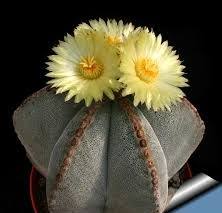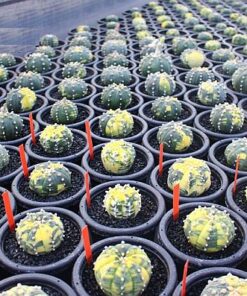Astrophytum asterias kikko pack of 10 seeds
₹199.00
Out of stock
Email when stock available
Astrophytum asterias kikko Description: This rare Japaese cultivar has raised tubercles along the ribs edges, in fact its areoles stick out with large notches between them, giving them a bumpy look. The furrows which appear transversely on the ribs cuts the continuity of the ribs and the plants appears decorated with a geometrical design which is raised above the surface. When viewed from above these plants resemble a tortoise-shell hence the Japanese word ‘Kitsu-kow’ that means “Turtle shell” but at a first glace (especially the nude form) resembles some chinned cacti particularly some Gymocalyciums. Usually the young seedlings appears nothing special and looks like normal asterias, and barely shows any trace of saw teeth, but they start to produce the distinguishing indentation and turn into an amazing adult as they get 3 to 7 years old. In general the bigger the “saw teeth” are and the rounder and flatter they are, the better. All species of Astrophytum (excluded A. caput-medusae) have their particular “kikko” variants.
Stem: Spherical flattened usually non-branched or few branched flat, dark green. Diameter 3(8)16 cm. Height 2 to 6 cm.
Areoles: round, cream-colored till white hairy up to 6 (3-12) mm) of diameters. The areoles are normally set in a separation up to 10 mm
Spines: None.
Ribs: Usually 8.
Flowers: Like those of the well known asterias yellow with a red throat.
Blooming season: Spring to summer.
Astrophytum asterias kikko Cultivation: Variegated and albinos cacti are regarded as choice and difficult in cultivation, but despite that many of them are relatively easy to grow. But be aware that they cannot tolerate prolonged exposure to direct sun light (especially during the hottest summer days), so grow them in half-shade or under filtered sun. They are sometime seen as grafted plants, but many grow well on their own roots, too.
On the contrary, the albinos can survive only if grafted on a strong green base.
Use mineral well-permeable substratum with little organic matter (peat, humus). Water sparingly from March till October and keep perfectly dry in winter at temperatures from 5 to 15 degrees centigrade. (In general these plants are more tender and cannot endure freezing temperatures ) In the rest period no high atmospheric humidity!!
Be the first to review “Astrophytum asterias kikko pack of 10 seeds” Cancel reply
You must be logged in to post a review.
FAQs
Related products
cactus and succulent seeds
cactus and succulent seeds
cactus and succulent seeds
Gymnocalycium mihanovichii seeds Variegated Seeds pack of 15-20 seeds
cactus and succulent seeds
Carnegiea gigantea (Saguaro) Seeds rare Cactus Seeds Pack of 20 seeds












Reviews
There are no reviews yet.